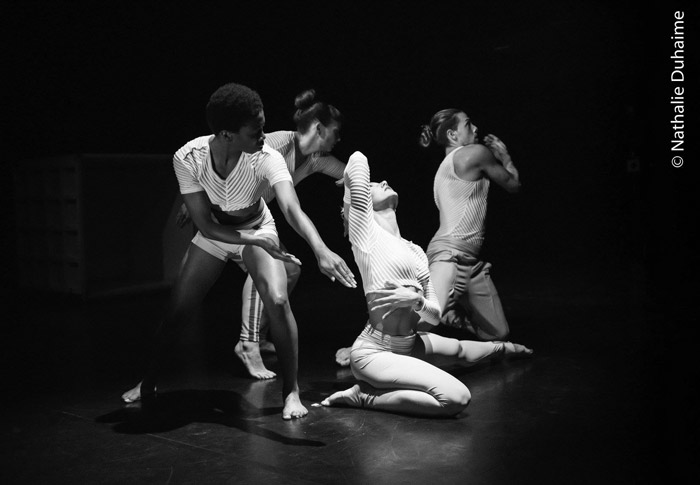An amber glow cut through the darkness, illuminating only part of the stage between floor and ceiling. Music began to thunder, and hands suddenly shot up, puncturing the glow, writhing on their own for a few moments before their bodies joined. This is not contemporary dance; this is dance in a contemporary world.
PHASE 1 and MYOCARDITIS are two urban contemporary dance groups who have derived their moves from ‘60s and ‘70s urban subcultures in the U.S. that do not require an audience sitting in the dark to empower and invigorate the individual dancer. Rather, viewers are fortunate enough to be privy to the emotion and expression found in the vibrating, rhythmic bodies, turning the role of the spectator on its head.
“The party is the foundation,” PHASE 1 choreographer and dancer Martine Bruneau says of “waacking,” a style of dance characterized by jerking limb movements that began in the LGBT community and the club scene. When dancing at a party, there is no narrative or metaphor, nor a forced adherence to a formal style. The motive is to impress and to enjoy.
“There is no wrong or right in freestyle,” explained a MYOCARDITIS dancer. “But I always say there’s ugly and attractive.”
PHASE 1 effectively brought this to a performance space in the 21st century. As dancers focus on their propelling arms and snapping legs, responding to the smallest intricacies of the music, the audience gets to experience the sense of peeking through the curtain and glimpsing their chaotic and throbbing joy.
On the tile floors of the lobby, girls in cigarette pants mimicked the dancers of PHASE 1—knees bending and ankles twisting across black and white hexagons. A man slid his tennis shoes across the tile, jumping up to the first step of the marble staircase to make room for friends who swayed, sauntered, and crumped their way over. His arms swung out, nearly hitting a potted palm and the woman sitting beside it, who was doing a dance of her own. Another girl jutted out one hip and threw her shoulders back, miming the feeling they evoked. It is natural to compare this to the tight hair buns and cracked pointe shoes of the ballet world, and the exclusivity that comes with it.
MYOCARDITIS choreographer and dancer Handy “Monstapop” Yacinthe emphasized that “street dance is still intelligent.” Yacinthe is considered a leader in the development of Montreal’s current “popping” community. Popping is a technique that originated in northern California in the ‘70s as a physical response to soul and funk music. During the dance, muscles alternate between loosening and tensing, creating a jerk-like effect that transforms the dancers into something at once human and mechanical. On stage, lighting, length, and mise-en-scène all contributed to the performance, but the overall attitude of the performance stressed that street dance should never be considered a lesser form.
Street dance is raw—it’s a talent that receives constant cheers from the audience when dancers hit the floor at the same time as the bass, and twist so gracefully it seems like they’re all tendon and no bone. Today there is a prevalence of conceptual art and a desperation to create something authentic. It is possible to interpret PHASE 1 and MYOCARDITIS as modern dance productions, but this would be a misunderstanding. Yacinthe is a popper, a locker, and a freestyler who says he, “cannot have influence from something I do not know.” This “something” is the study of contemporary dance. This is not an ode to an era, or even an avant-garde modern production. This is a style seen on the streets, on the competitive battle-stages, and for the audience as a performance.









